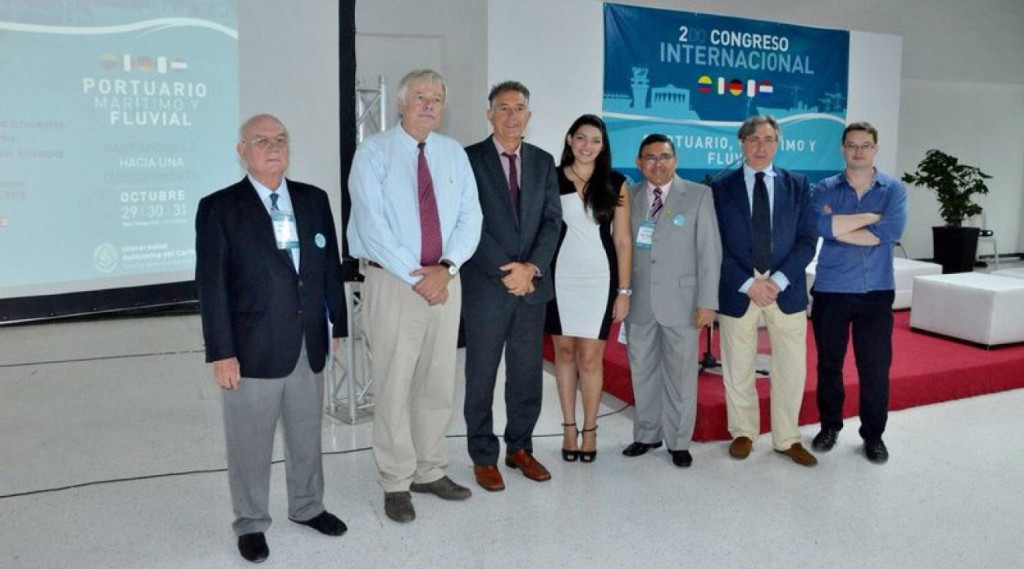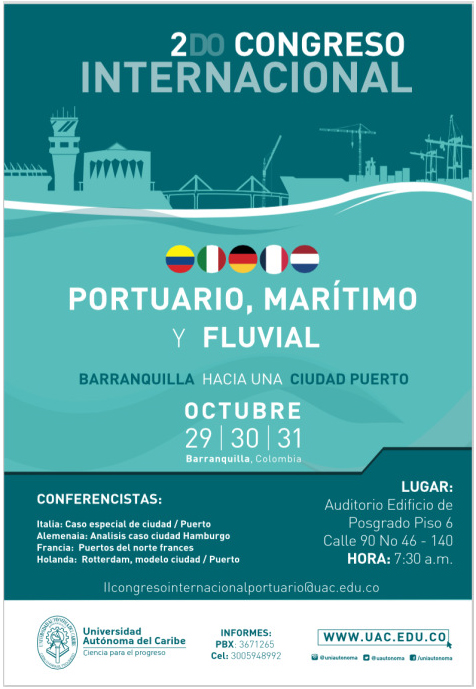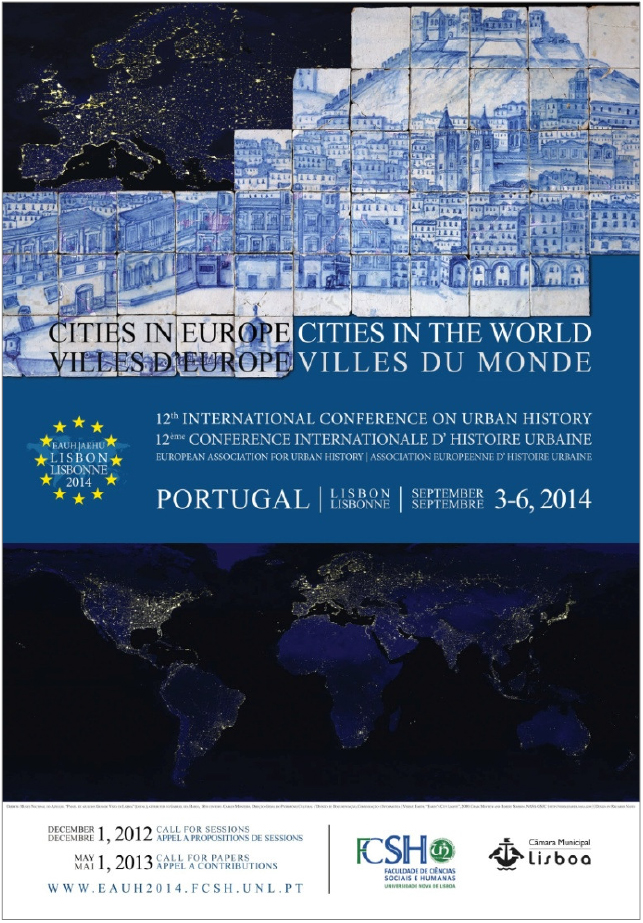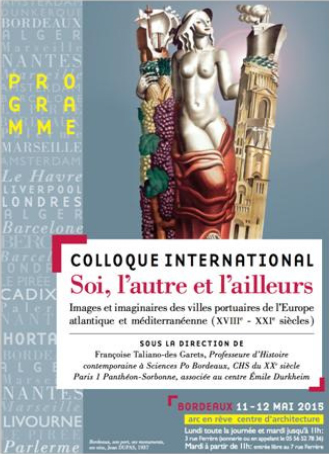In cities with and without major ports, from Hamburg to Lisbon, from Paris to Barcelona, from Berlin to Los Angeles, from Barranquilla to Havana, from Durban to Dublin, port professionals and scholars from multiple disciplines have gathered to discuss port cities over the last three years [1]. The topic is not new, but the high number of events signals increased interest. So far, these conferences, sessions and workshops mostly fall into two categories: those organized by professionals of ports and technology who seek to improve the functionality of the port and academics from social science and humanities fields who explore a broad range of port city-related developments. Despite the difference in attendees’ backgrounds and purposes, two commonalities stand out: First, both explore interrelation of port and city; second, a new and strong interest in history on the side of the port developers matches an increase of history-oriented events among academics. The proliferation of events raises the question: Are there novel opportunities for collaboration among different fields and approaches?
Port Authorities, maritime logistics, technology companies, and engineering departments at major universities have long studied port efficiency, safety, and energy. As the discussions in their conferences show, they see the need for both an integrated approach towards port and city and historical awareness. This is particularly well demonstrated in a publication on the “Competitiveness of Port Cities”, launched at a conference of the Organisation for Economic Co-operation and Development (OECD) in 2013 and published in 2014 [2]. The publication acknowledges positive effects of the port spill over to locations beyond the city, while most of the negative effects are concentrated in the port-city, and it asks how negative port impacts can be mitigated. In the first sentence of its introduction, the publication specifically brings up the past, describing a historical shift: “Ports and cities are historically strongly linked, but the link between port and city growth has become weaker” [3]. The references to the integration of port and city and its historic evolution are striking, but not unique. Professional institutions, port authorities, and governments have opted for some time to collaborate with each other more closely to foster regional visions and large-scale planning – that is, planning that takes into account more than the functionality of the port. Institutions such as the Association Internationale Ville et Ports (AIVP), also shape research and collaborations through their conferences and publications and have addressed the changing relationship of port and city over the last 25 years [4]. Port authorities are thus in search of an integrated approach to improve the relation between port and city and for further engagement with historical information elements that academics may be able to offer.
Conference in Baranquilla on port cities in 2014.
 Conference Participants in Baranquilla.
(Source:https://www.uac.edu.co/noticias-economicas/noticias-administracion-maritima-y-fluvial/item/1878-barranquilla-hacia-una-ciudad-puerto.html)
Conference Participants in Baranquilla.
(Source:https://www.uac.edu.co/noticias-economicas/noticias-administracion-maritima-y-fluvial/item/1878-barranquilla-hacia-una-ciudad-puerto.html)
As professional conferences engage with territories beyond the port, and times beyond the present and future, scholars from the social sciences and humanities employ innovative ways to research port cities, stressing the multiple social, political, and cultural aspects of port cities in addition to their economic role. Perhaps most striking in the multitude of conferences is the boom of events explicitly focused on the history of port cities. Five out of 51 sessions at the meeting of the European Association of Urban Historians in Lisbon in 2014 explored themes of port cities [5].
Even more strikingly, the World History Association (WHA) discussed port cities in world history in a dedicated symposium in 2014 [6]. Some 60 scholars convened to discuss social and cultural aspects that are largely absent or only discussed in passing in the professional conferences. The geographical range was broad, with an astounding number of papers on Asian ports and Spanish colonial networks. Specific topics included issues such as crime and lawlessness, issues of piracy, commerce, colonialism and colonial empires, multi-ethnic communities, ports as information centres, and ports and culture – all themes that are highly topical. These studies on issues of migration, ethnicity, and identity (or image construction) complement the scope of the port professionals in their attempt to connect port and city.
[one_half]
Poster of the 2014 conference of European Association of Urban Historians (EAUH) where numerous panels addressed issues of port cities.[/one_half]
[one_half_last]
The program of the event on images and imaginaries of port cities in Bordeaux 2015.[/one_half_last]
So far, the two groups have pursued their interests independently, for the most part. But their simultaneous interest in the multiple facets of port and city interaction and into their longer history may provide an incentive to push the two areas to integrate their research perspectives, specifically inciting the port professionals to increase collaboration with social scientists and humanists, including historians who taken a broader and more critical perspective towards port and city development. The study of port cities can also provide a framework for collaborative and comparative research in the humanities and social sciences; many more conferences will offer opportunities for new investigations. Collective efforts would benefit both the study of port cities and port cities themselves.
Notes
[1] Events include: International Roundtable Urban Economics, Historic and Port Cities, 12-15 October 2013, https://www.efst.hr/mosst/ (accessed 9. August 2015), Barranquilla hacia una ciudad puerto. 29-31 October 2014, https://www.uac.edu.co/noticias-economicas/noticias-administracion-maritima-y-fluvial/item/1878-barranquilla-hacia-una-ciudad-puerto.html (accessed 22 August 2015) Ciudad Y Puerto: La Experiencia European y los Desafíos de la Habana hoy/City and Port. European Experiences and the Challenges of Havana Today, 20-23 January 2015 https://www.planmaestro.ohc.cu/recursos/papel/eventos/ciudadypuerto.pdf (accessed 22 August 2015). AIVP conference on Smart Port City 2014 in Durban https://citiesandports2014.aivp.org/interventions/orales/la-citta-portuale-di-domani-sara?lang=en ; AIVP: Working Waterfront, https://www.aivp.org/dublin/en/ (last accessed 9 August 2015) (accessed 22 August, 2015). Big Ships on the Horizon and Social and Spatial Fragmentation at Home – Port Cities as Emblematic Places of Urban Transformation. RC 21 Conference in Berlin, 29-31 August 2013; EAUH, Lisbon 2014: multiple sessions on port cities:https://www.eauh2014.fcsh.unl.pt/index.php?conference=conference&schedConf=eauh2014&page=schedConf&op=trackPolicies (accessed 8 August 2015); Symposium on: “Port Cities in World History” (World History Association, Barcelona, March 26-28. 2014; Colloque international Soi, l’autre et l’ailleurs Images et imaginaires des villes portuaires de l’Europe atlantique et méditerranéenne (XVIIIe – XXIe siècles) Bordeaux, 11-12 May 2015. Some have been discussed in conference reports for example: HEIN, CAROLA, HALL, PETER V., JACOBS, WOUTER & LANGER-WIESE, ANNE 2013. Conference Report: Port cityscapes: dynamic perspectives on the port-city-waterfront interface, Special Paper Sessions at the Annual Meeting of the Association of American Geographers, Los Angeles, 12 April 2013. Town Planning Review, 84, 905-810, DUCRUET, CÉSAR 2015. The World Seastems research project (2013-2018). Portus, 26, STRUPP, CHRISTOPH 2015. Seaports in transition. Global change and the role of seaports since the 1950s. Planning Perspectives.
[2] The Competitiveness of Global Port Cities, 8 Dec. 2014 https://www.oecd.org/gov/regional-policy/Competitiveness-of-Global-Port-Cities-Synthesis-Report.pdf (accessed 9 August 2015).
[3] idem.
[4] AIVP 2015. Plan the City With the Port: Guide of Good Practices. AIVP.
[5] EAUH, Lisbon 2014: Sessions M28 At the Edge of the Atlantic World: Port Cities and Transcultural Change, 19th-21st centuries; M 38 Disaster and Rebuilding in Modern Port Cities; Port Cities: M44: Port Cities: Comparative Perspectives on Urban Stability and Public Safety (18th-21st centuries); S10. Gateways of Disease. Public Health in European and Asian Port Cities at the Birth of the Modern world, https://www.eauh2014.fcsh.unl.pt/index.php?conference=conference&schedConf=eauh2014&page=schedConf&op=trackPolicies (accessed 8 August 2015).
[6] Symposium on: “Port Cities in World History” (World History Association, Barcelona, March 26-28. 2014).
Head Image: City and port: Poster for the conference held in Havana in 2015.


